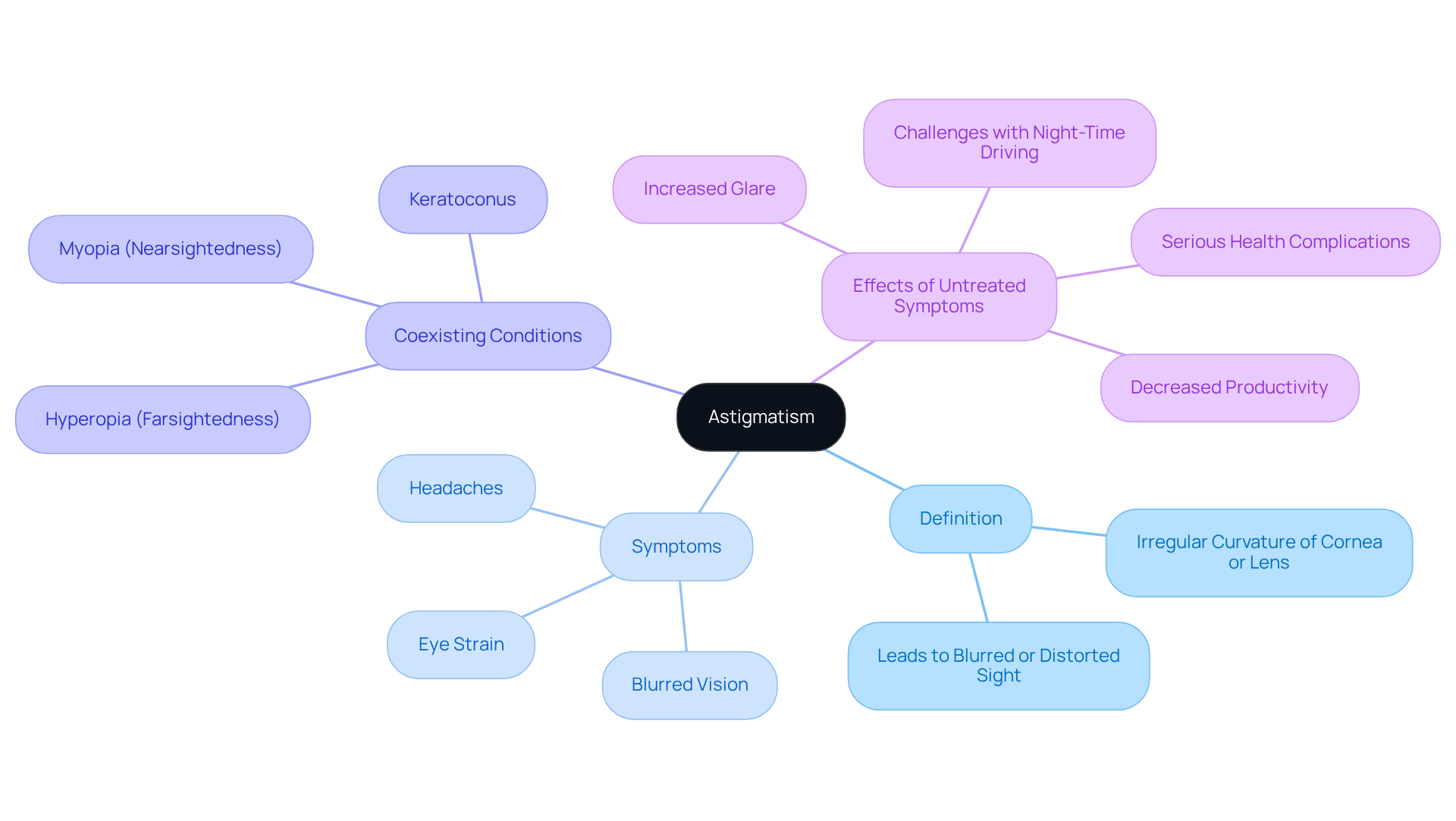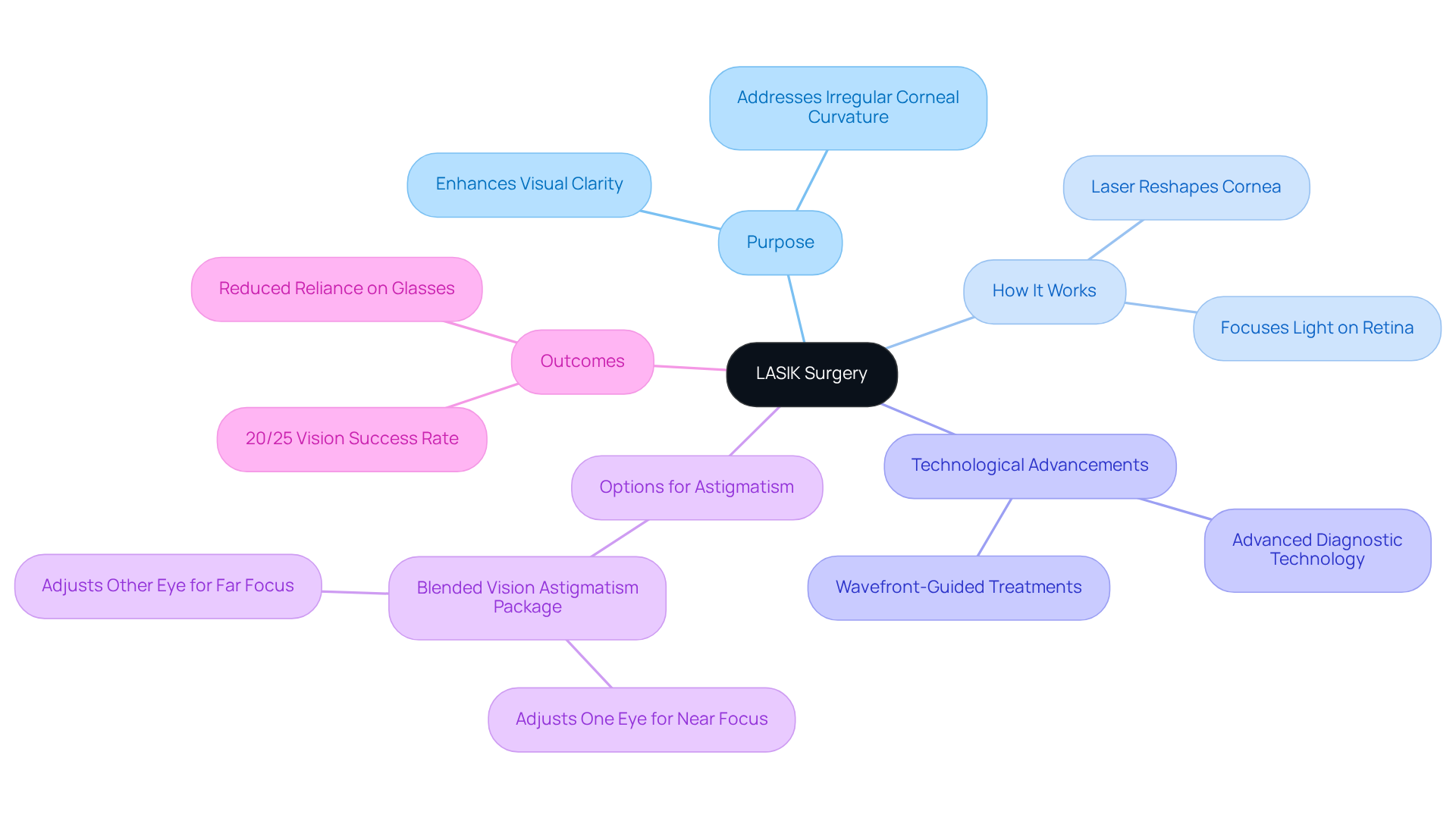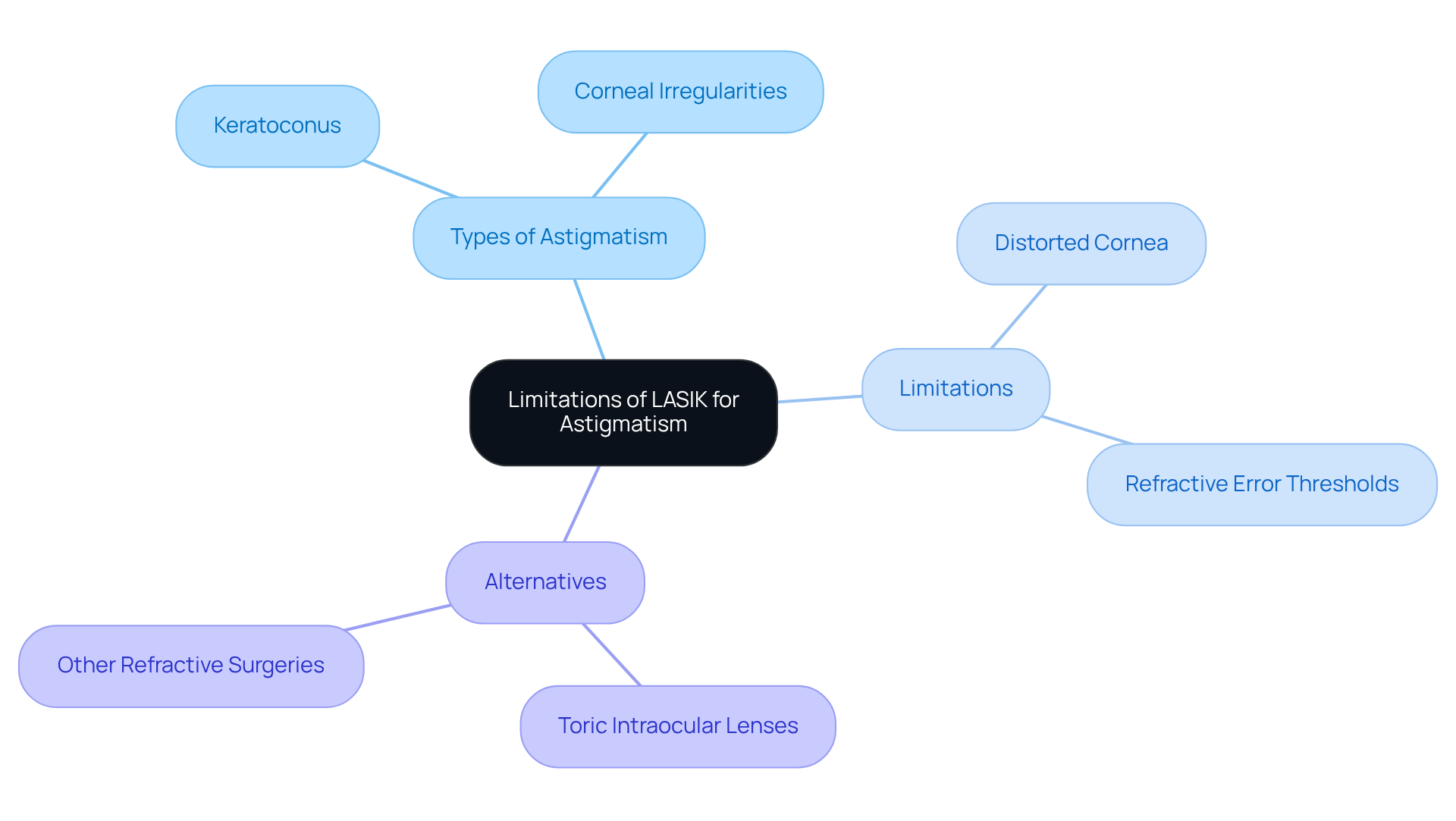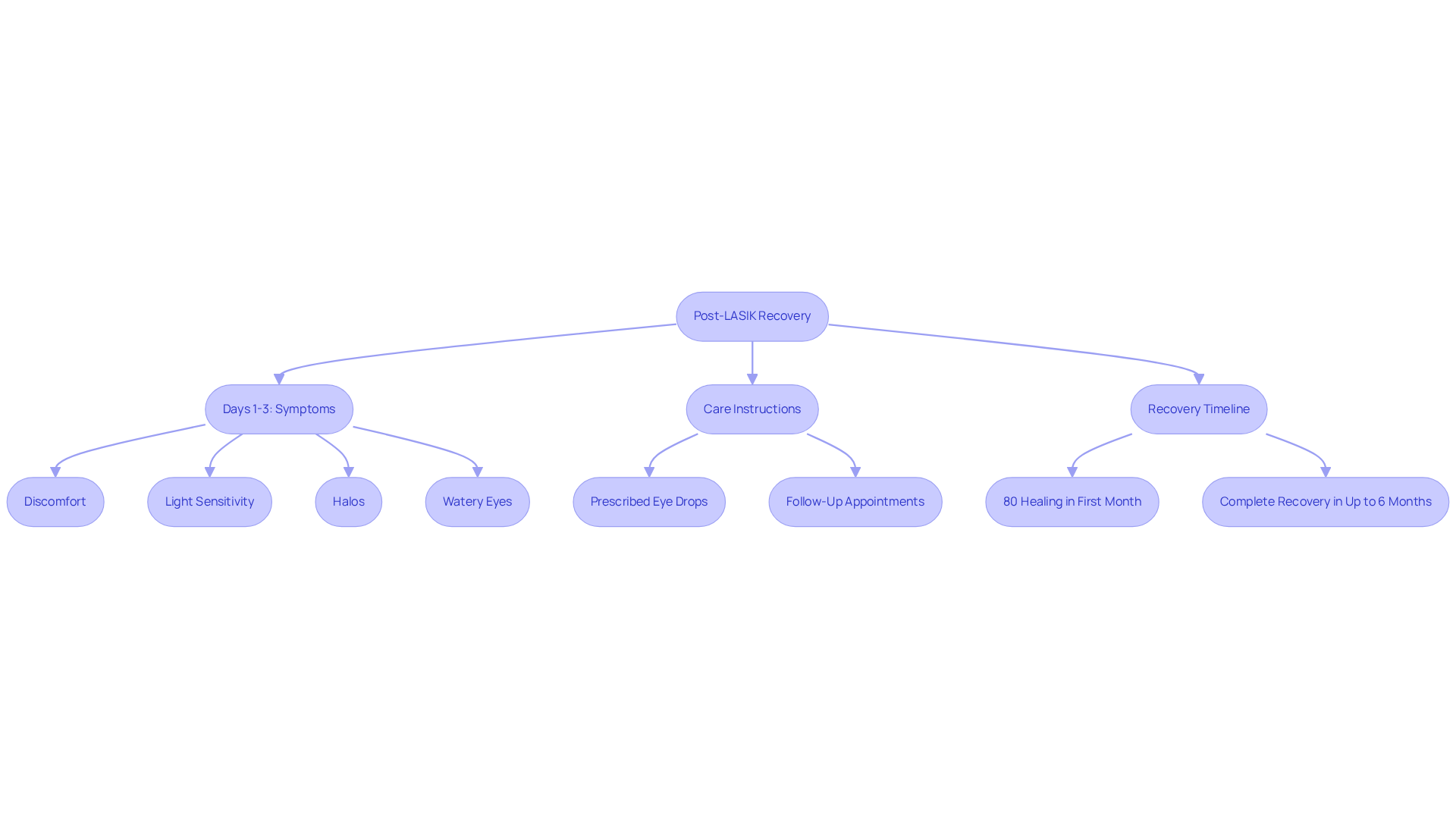Posted by: Northwest Eye in General on August 20, 2025
Overview
We understand that considering LASIK can be a significant decision, especially if you’re dealing with astigmatism. This procedure can effectively reshape the cornea, allowing light to focus accurately on the retina. Many individuals experience a remarkable improvement in visual clarity, which can be life-changing.
Recent advancements in laser technology and specialized treatment packages, such as the Blended Vision Astigmatism Package, enhance the precision and success rates of the procedure. However, it’s important to note that LASIK may not be suitable for everyone, particularly those with more complex corneal conditions.
If you have any concerns or questions, we are here to help you through this process. It’s common to feel a mix of excitement and apprehension, and we want to assure you that you are not alone.
Introduction
Astigmatism is a common refractive error that can deeply affect your vision, often leaving you with blurred or distorted sight. We understand that dealing with such challenges can be frustrating and overwhelming. Fortunately, advancements in laser technology have opened up new possibilities for correcting this condition through procedures like LASIK, offering hope for clearer vision.
However, it’s natural to wonder: can LASIK truly address all types of astigmatism? Are there limitations that you should consider before moving forward? Exploring the nuances of LASIK reveals both promising opportunities and important challenges that deserve your careful attention. We are here to help you navigate this journey and ensure you feel supported every step of the way.
Define Astigmatism: Understanding the Condition
Astigmatism is a common refractive error that many people experience. It is defined by an irregular curvature of the cornea or lens, leading to blurred or distorted sight at all distances. Unlike a perfectly round cornea, this condition presents a more oval shape, similar to a football. We understand that this irregularity can disrupt the even focusing of light rays on the retina, resulting in visual distortions.
It’s important to note that astigmatism often coexists with other refractive errors, such as myopia (nearsightedness) and hyperopia (farsightedness). Common symptoms include:
- Blurred vision
- Eye strain
- Headaches
These can also indicate other conditions, such as cataracts, diabetic retinopathy, and dry eyes. We know that experiencing these symptoms can be concerning, and it is essential to pursue .
Unaddressed vision issues can lead to heightened glare, challenges with night-time driving, and decreased productivity. Additionally, untreated symptoms may result in serious health complications. Understanding the causes and effects of this eye condition is vital for effective management and treatment. We are here to help you through this process and ensure you receive the care you need.

Explore LASIK: Can It Correct Astigmatism?
Laser-Assisted In Situ Keratomileusis, often referred to as LASIK, is a widely respected refractive procedure designed to address various vision challenges, including irregular corneal curvature. We understand that the prospect of surgery can be daunting, but during this procedure, a laser gently reshapes the cornea, allowing light to focus more accurately on the retina. For those experiencing refractive errors, laser eye surgery can significantly enhance visual clarity by correcting irregularities in the corneal surface.
Recent advancements in laser vision correction technology, such as wavefront-guided treatments, have made the procedure even more precise. This means that many individuals with astigmatism can now consider if can lasik fix astigmatism as a viable option. At Northwest Eye, we offer a Blended Vision Astigmatism Package, which allows you to achieve both close and distant vision by adjusting one eye for near focus and the other for far focus. This innovative approach can reduce your for both ranges.
Our package includes advanced diagnostic technology and thorough testing to ensure precise measurements and careful planning. We also provide post-operative laser enhancements if necessary, so you can feel confident in your care. Research indicates that a significant number of individuals achieve 20/25 vision or better after the procedure, showcasing its effectiveness as a corrective method. The blended vision package presents an advanced option for those seeking comprehensive vision correction. Remember, we are here to help you through this process and support you every step of the way.

Identify Limitations: Types of Astigmatism LASIK Cannot Fix
While laser eye surgery is a highly effective method for many individuals with irregular vision, achieving a for those who undergo the procedure, we understand that it may not be suitable for everyone. For instance, individuals with abnormal vision conditions, such as those caused by keratoconus or other corneal irregularities, may find laser eye surgery unsuitable. In these cases, the cornea’s shape can be too distorted for the procedure to achieve the desired correction.
It’s also common to feel concerned if you have significant levels of refractive error that surpass usual correction thresholds, as this may lead to reduced efficacy with laser eye surgery. For those individuals, alternatives such as toric intraocular lenses or other refractive surgeries are often recommended. A thorough evaluation by an eye care specialist is essential to determine the most appropriate treatment tailored to your specific condition.
As Dr. Swanic, a cornea-trained refractive expert who completed his fellowship at UCLA, highlights, understanding the distinct features of your vision condition is crucial in evaluating LASIK eligibility. For individuals with uneven curvature of the eye, exploring alternative treatments can lead to improved visual results.
Furthermore, with around 93 million adults at significant risk of sight loss, it is vital to pursue suitable treatment alternatives. Remember, we are here to help you through this process, ensuring you receive the care and support you deserve.

Understand Recovery: What to Expect After LASIK for Astigmatism
Recovery after laser eye surgery for astigmatism can help to answer the question of whether LASIK can fix astigmatism, as many individuals observe considerable visual enhancement within just 24 to 48 hours. However, it’s important to note that complete healing and stabilization of sight can extend over several weeks to months. During the initial recovery phase, it’s common to encounter mild discomfort, light sensitivity, and fluctuating vision, along with mild dryness or halos around lights in the first few days after LASIK surgery.
Halos are bright circles that surround light sources, often noticeable in dim or dark environments, and can be a normal response to bright lights. However, they may also indicate deeper issues, such as uncorrected refractive error or cataracts. We recognize that some individuals may experience , which can impact their ability to see clearly in dim conditions. Additionally, watery eyes can occur post-surgery, potentially due to blocked tear ducts or dry eye disease.
Adhering to post-operative care instructions is crucial. This includes:
- Using prescribed eye drops to alleviate discomfort and prevent infection
- Attending follow-up appointments to monitor healing progress
Most individuals can resume their regular activities within a few days, and many can drive the following day after a post-op check. However, complete recovery may require up to six months, and we advise avoiding contact sports or weightlifting until one month after surgery.
Understanding this timeline is essential for managing expectations and encourages adherence to care protocols, ultimately leading to improved outcomes. Notably, studies indicate that about 80% of healing occurs within the first month, underscoring the importance of following post-operative guidelines for optimal recovery. If you experience persistent halos, night driving glare, or other symptoms, seeking professional eye care is vital to address any underlying issues. We are here to help you through this process.

Conclusion
Astigmatism is a common visual impairment that can greatly impact daily life. However, effective treatment options like LASIK offer hope for many individuals. We understand that navigating this condition can be daunting, but by exploring advanced surgical techniques, you can make informed decisions about your vision correction journey. LASIK has emerged as a viable solution for correcting astigmatism, using cutting-edge technology to reshape the cornea and enhance visual clarity.
In this article, we have examined the intricacies of astigmatism alongside the capabilities and limitations of LASIK surgery. Key points include:
- The definition of astigmatism
- The potential of LASIK to address irregular corneal shapes
- The importance of thorough evaluations to determine candidacy for the procedure
- The recovery process and post-operative care, emphasizing the need for adherence to guidelines for optimal healing
Ultimately, the significance of addressing astigmatism cannot be overstated. With millions at risk of vision loss, it is crucial to seek professional guidance and explore all available treatment options. For those considering LASIK, understanding the procedure, its effectiveness, and the importance of comprehensive eye care can lead to improved quality of life and visual satisfaction. Taking the first step towards clearer vision can transform not just how you see the world, but how you experience it. We are here to help you through this process.
Frequently Asked Questions
What is astigmatism?
Astigmatism is a common refractive error characterized by an irregular curvature of the cornea or lens, leading to blurred or distorted vision at all distances.
How does astigmatism affect vision?
Astigmatism disrupts the even focusing of light rays on the retina, resulting in visual distortions, as the cornea is more oval-shaped rather than perfectly round.
What are the common symptoms of astigmatism?
Common symptoms include blurred vision, eye strain, and headaches.
Can astigmatism occur alongside other refractive errors?
Yes, astigmatism often coexists with other refractive errors such as myopia (nearsightedness) and hyperopia (farsightedness).
What complications can arise from untreated astigmatism?
Untreated astigmatism can lead to heightened glare, difficulties with night-time driving, decreased productivity, and serious health complications.
Why is it important to seek treatment for astigmatism?
Pursuing expert assessment and treatment is essential to manage symptoms effectively and prevent potential complications associated with untreated vision issues.






